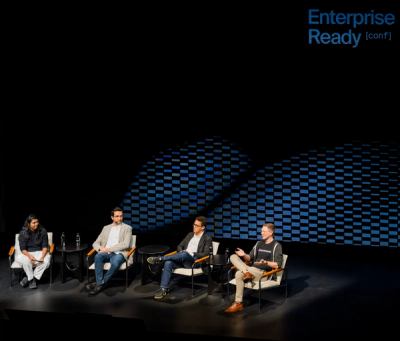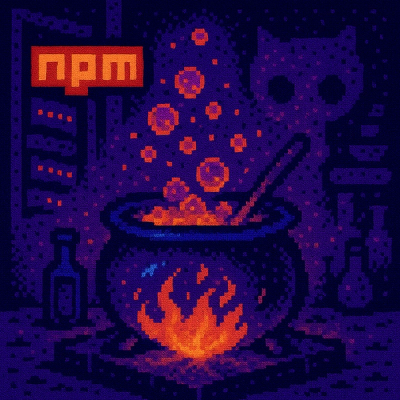
Security News
How Enterprise Security Is Adapting to AI-Accelerated Threats
Socket CTO Ahmad Nassri discusses why supply chain attacks now target developer machines and what AI means for the future of enterprise security.
torch-geometric
Advanced tools

PyG (PyTorch Geometric) is a library built upon PyTorch to easily write and train Graph Neural Networks (GNNs) for a wide range of applications related to structured data.
It consists of various methods for deep learning on graphs and other irregular structures, also known as geometric deep learning, from a variety of published papers.
In addition, it consists of easy-to-use mini-batch loaders for operating on many small and single giant graphs, multi GPU-support, torch.compile support, DataPipe support, a large number of common benchmark datasets (based on simple interfaces to create your own), and helpful transforms, both for learning on arbitrary graphs as well as on 3D meshes or point clouds.
Click here to join our Slack community!
Whether you are a machine learning researcher or first-time user of machine learning toolkits, here are some reasons to try out PyG for machine learning on graph-structured data.
In this quick tour, we highlight the ease of creating and training a GNN model with only a few lines of code.
In the first glimpse of PyG, we implement the training of a GNN for classifying papers in a citation graph.
For this, we load the Cora dataset, and create a simple 2-layer GCN model using the pre-defined GCNConv:
import torch
from torch import Tensor
from torch_geometric.nn import GCNConv
from torch_geometric.datasets import Planetoid
dataset = Planetoid(root='.', name='Cora')
class GCN(torch.nn.Module):
def __init__(self, in_channels, hidden_channels, out_channels):
super().__init__()
self.conv1 = GCNConv(in_channels, hidden_channels)
self.conv2 = GCNConv(hidden_channels, out_channels)
def forward(self, x: Tensor, edge_index: Tensor) -> Tensor:
# x: Node feature matrix of shape [num_nodes, in_channels]
# edge_index: Graph connectivity matrix of shape [2, num_edges]
x = self.conv1(x, edge_index).relu()
x = self.conv2(x, edge_index)
return x
model = GCN(dataset.num_features, 16, dataset.num_classes)
import torch.nn.functional as F
data = dataset[0]
optimizer = torch.optim.Adam(model.parameters(), lr=0.01)
for epoch in range(200):
pred = model(data.x, data.edge_index)
loss = F.cross_entropy(pred[data.train_mask], data.y[data.train_mask])
# Backpropagation
optimizer.zero_grad()
loss.backward()
optimizer.step()
More information about evaluating final model performance can be found in the corresponding example.
In addition to the easy application of existing GNNs, PyG makes it simple to implement custom Graph Neural Networks (see here for the accompanying tutorial). For example, this is all it takes to implement the edge convolutional layer from Wang et al.:
$$x_i^{\prime} ~ = ~ \max_{j \in \mathcal{N}(i)} ~ \textrm{MLP}_{\theta} \left( [ ~ x_i, ~ x_j - x_i ~ ] \right)$$
import torch
from torch import Tensor
from torch.nn import Sequential, Linear, ReLU
from torch_geometric.nn import MessagePassing
class EdgeConv(MessagePassing):
def __init__(self, in_channels, out_channels):
super().__init__(aggr="max") # "Max" aggregation.
self.mlp = Sequential(
Linear(2 * in_channels, out_channels),
ReLU(),
Linear(out_channels, out_channels),
)
def forward(self, x: Tensor, edge_index: Tensor) -> Tensor:
# x: Node feature matrix of shape [num_nodes, in_channels]
# edge_index: Graph connectivity matrix of shape [2, num_edges]
return self.propagate(edge_index, x=x) # shape [num_nodes, out_channels]
def message(self, x_j: Tensor, x_i: Tensor) -> Tensor:
# x_j: Source node features of shape [num_edges, in_channels]
# x_i: Target node features of shape [num_edges, in_channels]
edge_features = torch.cat([x_i, x_j - x_i], dim=-1)
return self.mlp(edge_features) # shape [num_edges, out_channels]
PyG provides a multi-layer framework that enables users to build Graph Neural Network solutions on both low and high levels. It comprises of the following components:
torch.compile and TorchScript support, as well as additions of efficient CPU/CUDA libraries for operating on sparse data, e.g., pyg-lib.
We list currently supported PyG models, layers and operators according to category:
GNN layers:
All Graph Neural Network layers are implemented via the nn.MessagePassing interface.
A GNN layer specifies how to perform message passing, i.e. by designing different message, aggregation and update functions as defined here.
These GNN layers can be stacked together to create Graph Neural Network models.
Pooling layers: Graph pooling layers combine the vectorial representations of a set of nodes in a graph (or a subgraph) into a single vector representation that summarizes its properties of nodes. It is commonly applied to graph-level tasks, which require combining node features into a single graph representation.
GNN models: Our supported GNN models incorporate multiple message passing layers, and users can directly use these pre-defined models to make predictions on graphs. Unlike simple stacking of GNN layers, these models could involve pre-processing, additional learnable parameters, skip connections, graph coarsening, etc.
GNN operators and utilities: PyG comes with a rich set of neural network operators that are commonly used in many GNN models. They follow an extensible design: It is easy to apply these operators and graph utilities to existing GNN layers and models to further enhance model performance.
Scalable GNNs: PyG supports the implementation of Graph Neural Networks that can scale to large-scale graphs. Such application is challenging since the entire graph, its associated features and the GNN parameters cannot fit into GPU memory. Many state-of-the-art scalability approaches tackle this challenge by sampling neighborhoods for mini-batch training, graph clustering and partitioning, or by using simplified GNN models. These approaches have been implemented in PyG, and can benefit from the above GNN layers, operators and models.
PyG is available for Python 3.10 to Python 3.13.
From PyG 2.3 onwards, you can install and use PyG without any external library required except for PyTorch. For this, simply run
pip install torch_geometric
If you want to utilize the full set of features from PyG, there exists several additional libraries you may want to install:
pyg-lib: Heterogeneous GNN operators and graph sampling routinestorch-scatter: Accelerated and efficient sparse reductionstorch-sparse: SparseTensor supporttorch-cluster: Graph clustering routinestorch-spline-conv: SplineConv supportThese packages come with their own CPU and GPU kernel implementations based on the PyTorch C++/CUDA/hip(ROCm) extension interface. For a basic usage of PyG, these dependencies are fully optional. We recommend to start with a minimal installation, and install additional dependencies once you start to actually need them.
For ease of installation of these extensions, we provide pip wheels for all major OS/PyTorch/CUDA combinations, see here.
To install the binaries for PyTorch 2.8.0, simply run
pip install pyg_lib torch_scatter torch_sparse torch_cluster torch_spline_conv -f https://data.pyg.org/whl/torch-2.8.0+${CUDA}.html
where ${CUDA} should be replaced by either cpu, cu126, cu128, or cu129 depending on your PyTorch installation.
cpu | cu126 | cu128 | cu129 | |
|---|---|---|---|---|
| Linux | ✅ | ✅ | ✅ | ✅ |
| Windows | ✅ | ✅ | ✅ | ✅ |
| macOS | ✅ |
To install the binaries for PyTorch 2.7.0, simply run
pip install pyg_lib torch_scatter torch_sparse torch_cluster torch_spline_conv -f https://data.pyg.org/whl/torch-2.7.0+${CUDA}.html
where ${CUDA} should be replaced by either cpu, cu118, cu126, or cu128 depending on your PyTorch installation.
cpu | cu118 | cu126 | cu128 | |
|---|---|---|---|---|
| Linux | ✅ | ✅ | ✅ | ✅ |
| Windows | ✅ | ✅ | ✅ | ✅ |
| macOS | ✅ |
To install the binaries for PyTorch 2.6.0, simply run
pip install pyg_lib torch_scatter torch_sparse torch_cluster torch_spline_conv -f https://data.pyg.org/whl/torch-2.6.0+${CUDA}.html
where ${CUDA} should be replaced by either cpu, cu118, cu124, or cu126 depending on your PyTorch installation.
cpu | cu118 | cu124 | cu126 | |
|---|---|---|---|---|
| Linux | ✅ | ✅ | ✅ | ✅ |
| Windows | ✅ | ✅ | ✅ | ✅ |
| macOS | ✅ |
Note: Binaries of older versions are also provided for PyTorch 1.4.0, PyTorch 1.5.0, PyTorch 1.6.0, PyTorch 1.7.0/1.7.1, PyTorch 1.8.0/1.8.1, PyTorch 1.9.0, PyTorch 1.10.0/1.10.1/1.10.2, PyTorch 1.11.0, PyTorch 1.12.0/1.12.1, PyTorch 1.13.0/1.13.1, PyTorch 2.0.0/2.0.1, PyTorch 2.1.0/2.1.1/2.1.2, PyTorch 2.2.0/2.2.1/2.2.2, PyTorch 2.3.0/2.3.1, PyTorch 2.4.0/2.4.1, and PyTorch 2.5.0/2.5.1 (following the same procedure).
For older versions, you might need to explicitly specify the latest supported version number or install via pip install --no-index in order to prevent a manual installation from source.
You can look up the latest supported version number here.
NVIDIA provides a PyG docker container for effortlessly training and deploying GPU accelerated GNNs with PyG, see here.
In case you want to experiment with the latest PyG features which are not fully released yet, either install the nightly version of PyG via
pip install pyg-nightly
or install PyG from master via
pip install git+https://github.com/pyg-team/pytorch_geometric.git
The external pyg-rocm-build repository provides wheels and detailed instructions on how to install PyG for ROCm.
If you have any questions about it, please open an issue here.
Please cite our PyG 1.0 and PyG 2.0 papers if you use this code in your own work:
@inproceedings{Fey/Lenssen/2019,
title={Fast Graph Representation Learning with {PyTorch Geometric}},
author={Fey, Matthias and Lenssen, Jan E.},
booktitle={ICLR Workshop on Representation Learning on Graphs and Manifolds},
year={2019},
}
@inproceedings{Fey/etal/2025,
title={{PyG} 2.0: Scalable Learning on Real World Graphs},
author={Fey, Matthias and Sunil, Jinu and Nitta, Akihiro and Puri, Rishi and Shah, Manan, and Stojanovi{\v{c}, Bla{\v{z} and Bendias, Ramona and Alexandria, Barghi and Kocijan, Vid and Zhang, Zecheng and He, Xinwei and Lenssen, Jan E. and Leskovec, Jure},
booktitle={Temporal Graph Learning Workshop @ KDD},
year={2025},
}
Feel free to email us if you wish your work to be listed in the external resources. If you notice anything unexpected, please open an issue and let us know. If you have any questions or are missing a specific feature, feel free to discuss them with us. We are motivated to constantly make PyG even better.
FAQs
Graph Neural Network Library for PyTorch
We found that torch-geometric demonstrated a healthy version release cadence and project activity because the last version was released less than a year ago. It has 2 open source maintainers collaborating on the project.
Did you know?

Socket for GitHub automatically highlights issues in each pull request and monitors the health of all your open source dependencies. Discover the contents of your packages and block harmful activity before you install or update your dependencies.

Security News
Socket CTO Ahmad Nassri discusses why supply chain attacks now target developer machines and what AI means for the future of enterprise security.

Security News
Learn the essential steps every developer should take to stay secure on npm and reduce exposure to supply chain attacks.

Security News
Experts push back on new claims about AI-driven ransomware, warning that hype and sponsored research are distorting how the threat is understood.